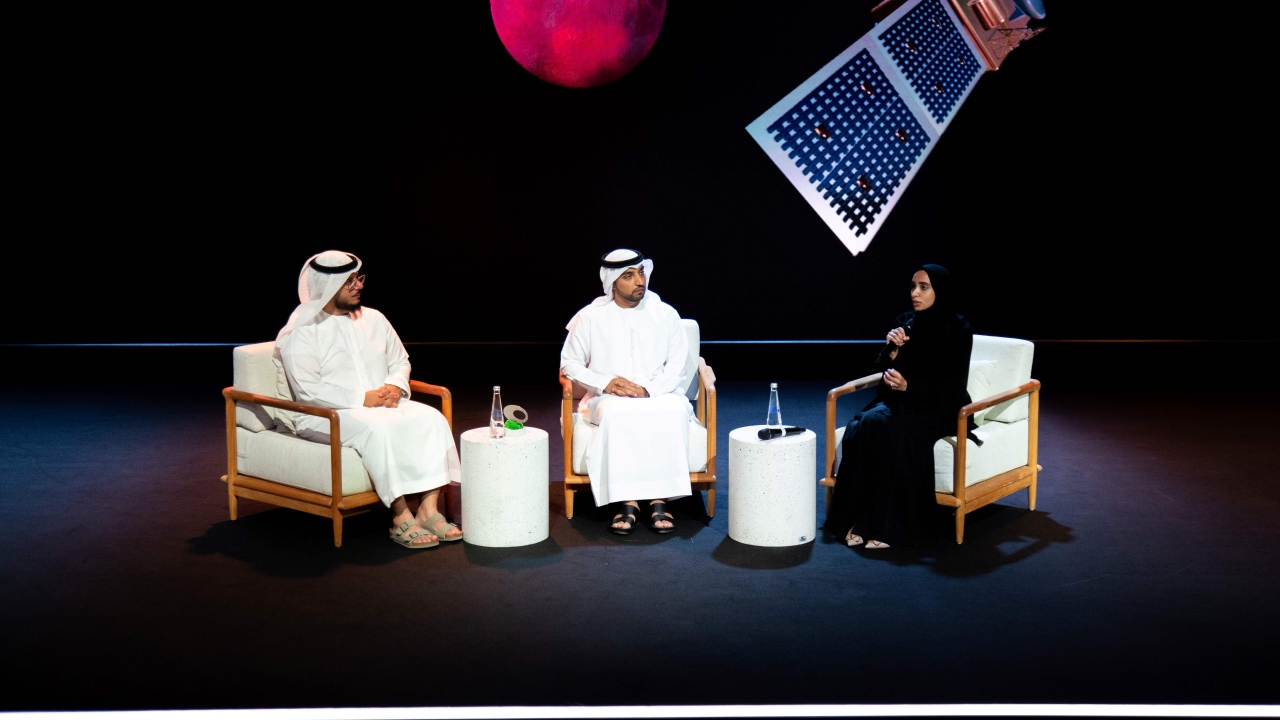Hope Probe to move to a new Mars Orbit and observe Deimos
The Emirates Mars Mission 'Hope Probe' is transitioning to a new orbit.

Image: UAE Space Agency
The orbital transfer will allow the Hope Probe to fly within approximately 150 Km and capture unprecedented data on Deimos, the smaller and outermost of the two natural satellites of Mars.
The new move will allow the Hope Probe to transition into a new elliptic orbit around Mars, following a Lambert orbital transfer manoeuvre utilising the change in its velocity. The new orbit will facilitate gathering data on Deimos, while allowing the Probe to continue its original mission and capture data on Mars’ atmosphere.
Deimos is the least observed compared to the red planet’s second moon, Phobos, which has been widely observed since its discovery in 1969. Orbiting Mars on a larger orbit, Deimos completes a revolution around the planet every 30 hours.
“The deimos campaign aims to provide the international scientific community with previously unseen observations and data. The Hope Probe will capture high cadence images and data of the irregularly shaped, crater-heavy moon, during fly-bys at different times,” said Hessa Al Matroushi, Emirates Mars Mission Science Lead.
The first Deimos fly-by began late January and continues through February 2023, as the Probe moves to its closet approach to the moon, this allows the Hope Probe’s Emirates Exploration Imager (EXI), Emirates Mars Ultraviolet Spectrometer (EMUS), and the Emirates Mars Infrared Spectrometer (EMUS), to capture high cadence images and detailed observations of the moon.
To enable the orbital transfer manoeuvre the Hope Probe completed two out of three manoeuvre using its main thrusters in September 2022 and January 2023, marking the first time the thrusters were activated remotely to make the necessary orbital corrections.
The Hope Probe orbits Mars is currently in its elliptic orbit between 20,000 and 43,000 km with a 25-degree incline towards the planet, giving it the unique ability to complete one revolution around the planet every 55 hours, capturing comprehensive data every nine days. The slight change in the Probe’s orbit will allow it to capture new observations of Deimos, while capturing data on the red planet’s atmosphere.
Stay up to date
Subscribe to the free Times Aerospace newsletter and receive the latest content every week. We'll never share your email address.

